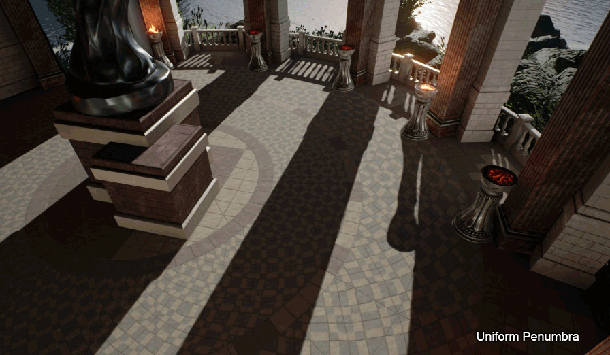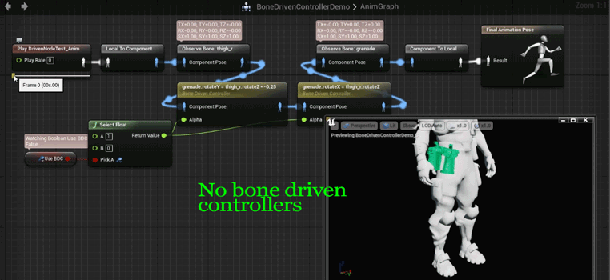Epic Games releases Unreal Engine 4.9

Unreal Engine 4.9 supports area shadows for stationary lights: one of almost 130 new features in the latest version of the game engine, including updates to the animation system and experimental DX12 support.
Epic Games has released Unreal Engine 4.9, a wide-ranging update to the game engine, including new rendering options, updates to the Persona animation system, and experimental support for DirectX 12.
New rendering, LoD and particle collision options
It takes several minutes just to scroll through the release notes for Unreal Engine 4.9, but of the 130-odd new and improved features, the ones of most interest to artists are probably the rendering and animation options.
These include support for area shadows from stationary lights in the Lightmass raytracer; and a new Ambient Occlusion Material Mask, for using Lightmass-calculated AO in procedural textures.
The Distance Field Ambient Occlusion system has also been updated to generate smoother output with a more predictable performance cost, at the expense of requiring a longer history filter.
In addition, the Hierarchical Level of Detail (HLOD) system introduced in Unreal Engine 4.8 has been extended, including the option to draw volumes manually to define which objects should be included in a LoD grouping.
Unreal Engine 4.9 also now supports full-scene particle collision, enabling particles like sparks or falling snow to interact efficiently with an entire scene, not just what is visible on screen.
New animation blending modes and support for bone-driven animation controllers
The Persona animation system has been updated to add six new functions for blending between character poses and during animation transitions, on top of the existing Linear and Cubic blending.
In addition, animators can set up a rig to include Driver bones that dynamically affect the motion of Driven bones at run-time, as shown above, reducing geometry intersections without the need for manual corrections.
More generally, the Curve Editor has been revamped to make it easier to edit curve keys and tangents.
Improved support for VR and mobile devices, experimental support for DirectX 12
Other new features in Unreal Engine 4.9 include extended VR support, including a common abstraction layer for motion controllers. It currently supports the HTC Vive, with devices like PlayStation Move to come.
Rendering options on iOS and Android have been extended with support for decals, dynamic character shadows from directional lights, and dynamic point lights – the last of which are also supported on HTML5.
And finally, DirectX 12, officially launched alongside Windows 10 last month, is now supported as an experimental feature.
Epic described DX12 as a “much lower-level rendering API that is more efficient and allows for rendering commands to be submitted in parallel across many threads: a feature inspired by console rendering APIs”.
The summary here only scratches the surface of the new features, so it’s worth visiting the release notes via the link at the foot of this story to see which tools address your own individual needs.
Pricing and availability
Unreal Engine 4.9 is available for 64-bit Windows 7+ and Mac OS X 10.9.2. Use of the editor is free, but Epic takes 5% of gross revenues beyond the first $3,000 per quarter for any product you release commercially.

